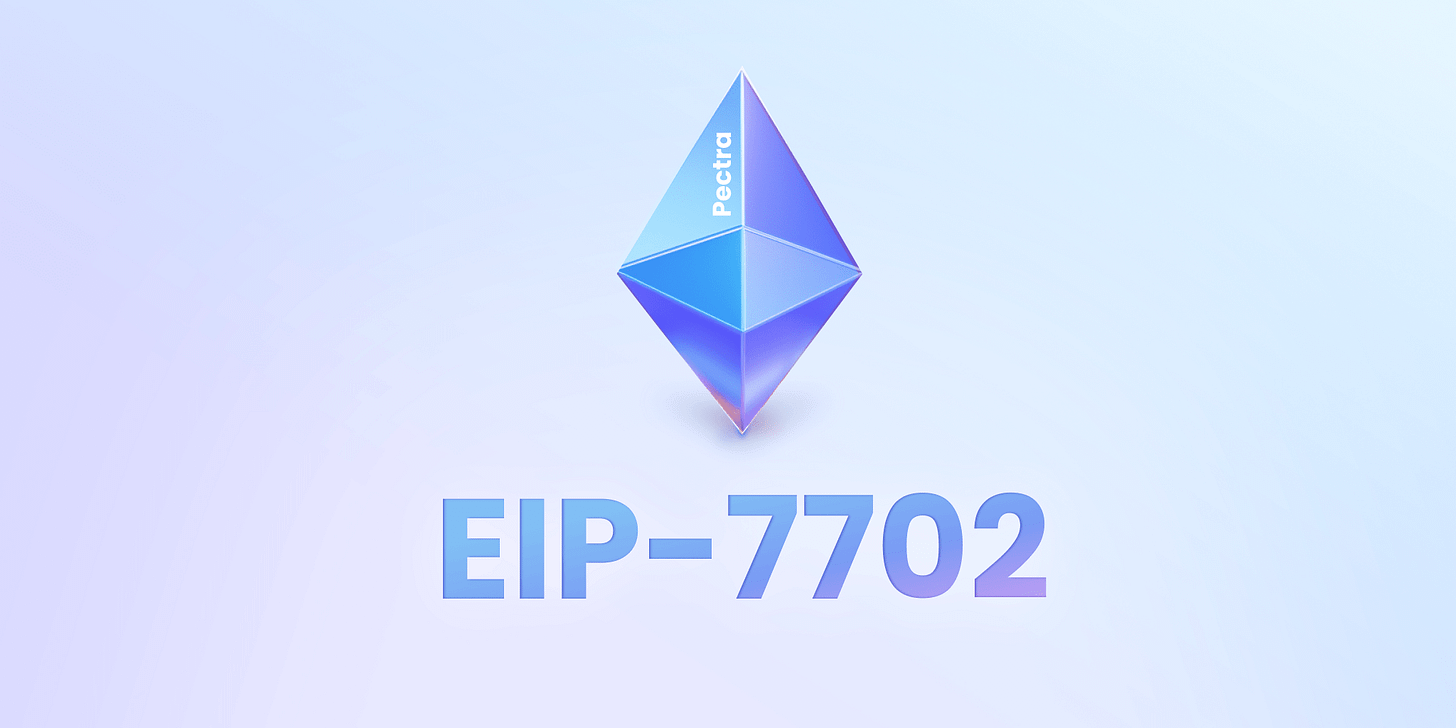EIP-7702: A Double-Edged Sword for Ethereum Security
Ethereum Improvement Proposal EIP-7702 introduces an innovative upgrade to externally owned accounts (EOAs) by allowing users to temporarily attach smart contract code to their account for a single transaction. This change gives EOAs superpowers—enabling programmable behavior, session keys, and even gas abstraction.
However, this newfound power introduces a subtle but potent attack surface that the ecosystem must carefully assess. In this post, we’ll break down:
What EIP-7702 enables
Why it’s powerful (and risky)
A breakdown of the new attack surface
Realistic attack scenarios
Recommendations for wallets, dApps, and auditors
Quick Recap: What Does EIP-7702 Do?
EIP-7702 is a proposal to add a new Transaction type to allow an EOA to designate a Smart Contract as its "implementation".
The main difference between an EIP-7702 Transaction and other transactions is the inclusion of a "authorization_list" property.
Applications of EIP-7702 include:
Batching: allowing multiple operations from the same user in one atomic transaction. One common example is an ERC-20 approval followed by spending that approval, a common workflow in DEXes that requires two transactions today. Advanced use cases of batching occasionally involve dependencies: the output of the first operation is part of the input to the second operation.
Sponsorship: account X pays for a transaction on behalf of account Y. Account X could be paid in some other ERC-20 for this service, or it could be an application operator including the transactions of its users for free.
Privilege de-escalation: users can sign sub-keys, and give them specific permissions that are much weaker than global access to the account. For example, you could imagine a permission to spend ERC-20 tokens but not ETH, or to spend up to 1% of total balance per day, or to interact only with a specific application.
The New Attack Surface: Temporary Account Takeover
The primary vulnerability introduced by EIP-7702 lies in the potential for users to be tricked into delegating control of their accounts to malicious smart contracts. Here's how a typical attack could unfold:
A user interacts with a seemingly legitimate dApp or receives a phishing link. This malicious interface could prompt the user to sign a transaction that, under the hood, contains an authorization to delegate their account's authority to a contract controlled by the attacker. Once this authorization is granted, the attacker's contract can execute arbitrary actions on behalf of the user within that single transaction. This could include draining the user's entire balance of various tokens in a single, devastating blow.
This is a significant departure from the traditional security model of Ethereum, where each transaction from an EOA requires a separate signature. EIP-7702's batching capability, while convenient, can be weaponized to execute a series of malicious operations that a user would never individually approve.
How Scammers Will Try to Trick You?
The most likely attack vector will be phishing and malicious dApps. Here’s a plausible scenario:
The Lure: You click a link for a "special airdrop" or a "new NFT mint" that leads to a slick-looking, but malicious, website.
The Action: The site prompts you to perform a simple action, like "Claim Your Tokens." You see a signature request in your wallet that looks fairly normal.
The Hidden Payload: What you don't see clearly is that the transaction data is structured as an EIP-7702 transaction. By signing it, you're not just claiming tokens; you are also setting a malicious smart contract as your account's temporary
authority.The Attack: Once the transaction is sent to the network, the malicious
authoritycode executes with your account's permissions. It can immediately call theapprovefunction on your stablecoins, transfer your Bored Ape NFT, or interact with any other protocol as if it were you. By the time the transaction is confirmed, your assets are gone.
Conclusion: How to Stay Safe
This sounds scary, but don't panic. The Ethereum community is known for building robust defenses. Your security will depend on a combination of better tools and smarter habits.
Your Wallet is Your First Line of Defense: This is the most important point. Reputable wallet providers (like MetaMask, etc.) will be crucial. They are already working on updating their user interfaces to clearly and explicitly warn you when a transaction is trying to set an
authorization_listover your account. Never sign an EIP-7702 transaction if your wallet doesn't provide a clear, human-readable explanation of what permissions you are granting.Use Transaction Simulations: Use wallets and tools that offer reliable transaction simulations. These tools show you the expected outcome of a transaction before you sign it, revealing if it will result in unexpected token transfers or approvals.
Stay Informed: Keep abreast of the latest security best practices and potential vulnerabilities, specially that associated with EIP-7702.
Keep following us Verichains:



